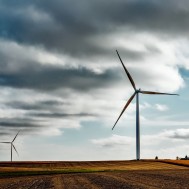The renewable energy industry has seen tremendous growth over the last decade, and it continues to grow as technology advances. Although renewable energy applications are far different than those of traditional oil and gas, rubber seals are still required to be strong and durable to handle the toughest conditions.
In any energy application, rubber seals are exposed to various levels of pressure, heat, cold and torque that challenge the stability of the rubber compound. However, renewable energy applications create a unique kind of wear and tear. Dust and debris need to be sealed off from sensitive electronics and seals need to handle prolonged exposure to heat and sunlight in solar applications. With new demands come new hurdles for rubber manufacturers to overcome. Here is what you need to know about rubber seals in renewable energy applications:
Material selection is very important.
In the renewable energy industry, rubber seals will often be exposed to extreme heat, prolonged sunlight and other harsh weather conditions. To ensure the seal is functioning at its fullest potential, it’s important to choose the right material during the design process.
Apple Rubber carries a variety of sealing materials that offer excellent heat resistance, including:
- Aflas®️ with temperature ranges of -14° to +446°F
- Viton®️ with temperature ranges of -13° to +446°F
- Silicone with temperature ranges of -85° to +400°F
You can view the compatibilities and limitations of these rubber compounds and many more in Apple Rubber’s Material Selection Guide.
Rubber seals must be able to withstand weathering.
Different renewable energy applications require different capabilities of rubber seals. In wind energy applications, seals must be able to withstand exposure to extreme environmental conditions, including rain, snow, hail, dust, sand and wind erosion that may negatively affect the seal or system as a whole.
Silicone is often used for wind applications because it provides excellent protection for wind turbines. Silicone is able to withstand harsh temperature fluctuations while simultaneously keeping water and dust from breaking through, which could potentially cause seal failure.
Different seal types have specific capabilities.
Rubber o-rings, gaskets and composite seals are all utilized in the renewable energy industry. O-Rings of all sizes, materials and hardness are used to seal against harsh environments. Apple Rubber has the largest inventory of rubber o-rings in the industry, containing over 8,000 o-rings of all different sizes.
Composite seals are custom engineered by Apple Rubber, incorporating the seal and another component into one part to help ease the installation process. They often include complex designs such as rubber bonded to metal, plastic or filter materials. Renewable energy applications utilize different seal types for certain applications, as each seal types have different capabilities and strengths.
Want to talk more about renewable energy?
Tweet us @AppleRubber to continue the conversation.
